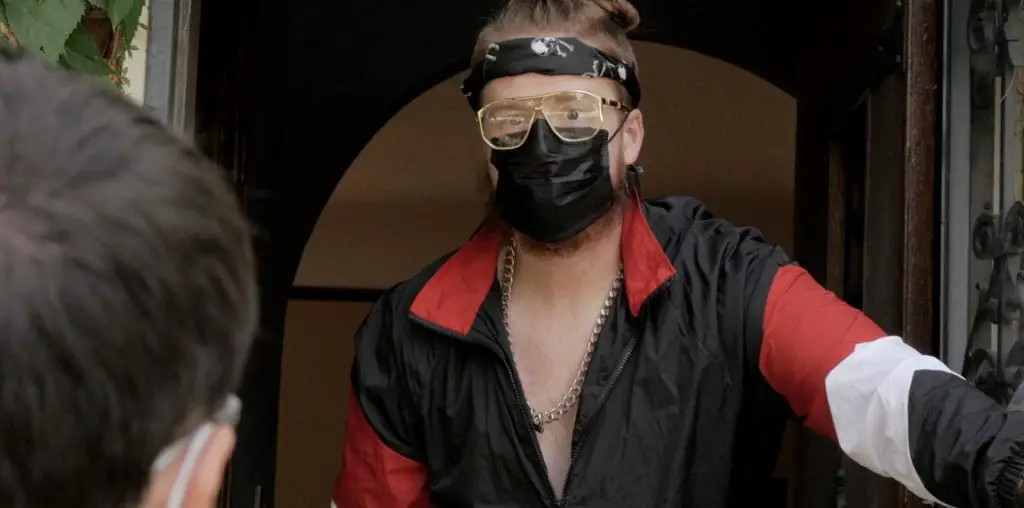
To write about Guy Maddin’s extensive repertoire requires courage and wit. One must wade through labyrinthine mire where lost loves and demons patrol and control and eat wayward writers alive. So why attempt such a dangerous feat when answers lie buried in riddles? Perhaps all who pursue and document truth are lovingly trapped in compulsion and write because they must.
There are threads that persist in Maddin’s work. Namely: amnesia, obsession, malformed or multiple identity, melodramatic unrequited love, silent film accompanied by disembodied (intertitled) voice and rhythmic sound, coexistence of past, present and future from which dream and memory derive, Film Noir as concept and photographic style, insular family tableaux against changing, absurdist-world, and – always – comedy in pathos.
We may seek the sources of these threads by stepping back to his early film, 1990’s “Archangel” (available on DVD in Zeitgeist’s “Guy Maddin Collection”). Archangel is a town in northernmost Russia, as cold and isolated as Winnipeg, the source of his recent self-reflective documentary. For Maddin, place is a state of mind. Maddin explains we are in the Archangel of 1919, the Great War over though no one informs the inhabitants who continue to fight. The film opens with Eisenstein-inspired docu-portraits of the characters. Pieced together, they montage a story. Each black and white image is meticulously sculpted with light, so beautifully rendered it could be plucked and hung in a noir museum. Maddin uses a similar noir-portrait in “My Winnipeg,” albeit focused on the entrapment of a passenger bound to nowhere, lost for an escape.
Maddin’s odd, displaced language amidst silent visuals is pronounced in “Archangel.” In one scene the unrequited lovers speak telepathically. But for one utterance of “no,” they love and speak with their eyes. Lips unmoving, we hear their disembodied voices from distant time on the soundtrack. In another scene, the landlady’s (another twin of Verhonka/Iris) cowardly husband hides in bed at traumatic moments. Maddin shows his embryonic face as accompanied by unseen infant cries, implying the voice is his.
The strength of Archangel lies in “Baba,” or grandmother. Iron and shrewd, she can bury men with her tongue. Yet tough and Hitchcockian-weird as this matriarch appears – as does Mother, in “My Winnipeg” – she embodies a gentleness that makes us weep. Though many critics of Maddin over-emphasize the recurrent domineering matriarch, Maddin resists analysis in strictly Freudian terms. The humor-cloaked Maddin is clearly complex, like his work.
Many call Maddin a Canadian David Lynch – perhaps an over-simplification of the former auteur. If anything, Maddin’s work is more akin to Robert Weine’s “The Hands of Orlac” (1924) and “The Cabinet of Dr. Caligari” (1919), Krzystof Kieslowski’s “The Double Life of Veronique” (1991) – and even Christopher Nolan’s more mainstream “Memento” (2000). In all cases, expressionist shooting with somnambulist flavor illustrate tone and the feeling of entrapment inside the protagonist’s brain. Does this mean Guy Maddin is simply the creator of modern Horror films, one who dwells on the frighteningly maimed? Again, there is a danger in categorizing the man. In our formidable time where “real” life may abruptly go up in smoke, the dreamy, peg-legged Lt. John Boles of “Archangel” offers us faith and hope that love conquers time and adversity.
